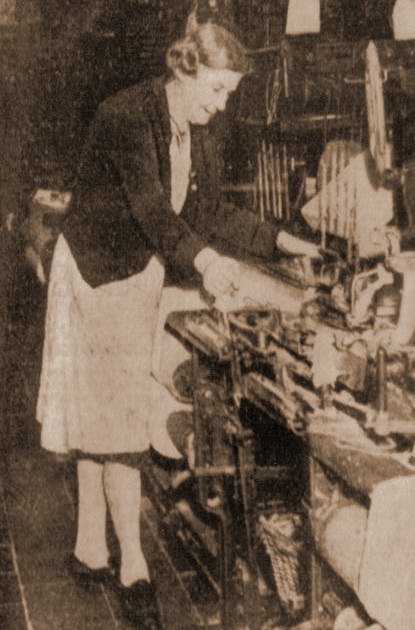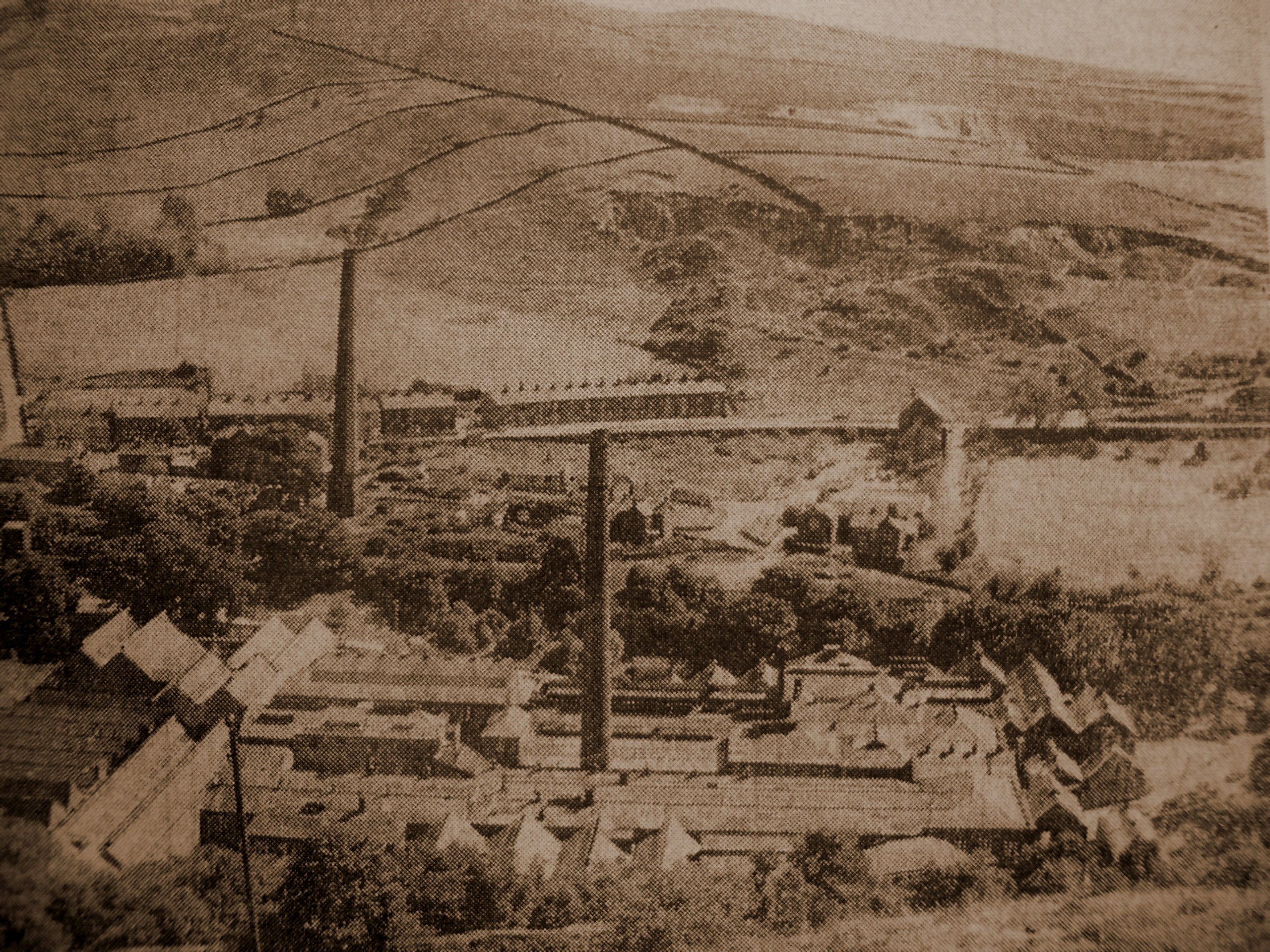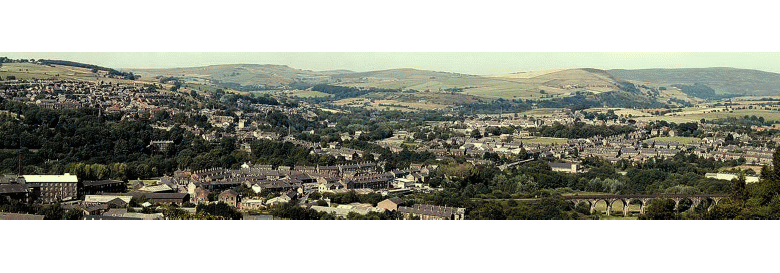Industrial development at New Mills and Rowarth.
Derbyshire has a particularly interesting place in the textile industry for it was here that the factory production of both cotton and silk began. The old silk mill n derby was the first power driven textile factory in the country and an important landmark in the history of the industrial revolution. It was opened about 1720 by John Lombe, who had spent some time in Italy learning the process and bought Italian workmen back with him. When the patent expired in 1732, the industry rapidly developed in Derby, Chesterfield and Glossop and spread over the border to Macclesfield, Congleton and Stockport. In Stockport it paved the way for the later development of cotton spinning.
The cotton industry grew almost accidentally as a result of Arkwright’s coming to Nottingham in 1768. His partnership with Jedediah Strutt and the market provided by the local hosiery trade led him to open his first water driven factory at Cromford in 1771. In the succeeding years, factories sprang up along the valley of the Derwent and it tributaries and along the banks of the Goyt and the Etherow in the north. Places like Belper and Glossop grew at a remarkable pace. Many of these early mills, like those at Litton and Cressbrook were in isolated places and little communities developed with the employer a more or less benevolent dictator. The Strutts at Belper provided everything; church, library, day school and Sunday school, houses and sport. Marple was similarly a creation of Samuel Oldknow. The majority of workers were women and children. When Oldknow tried to work a full employment scheme at Mellor, the main problem was to find jobs for the men. The children were bought in batches from the poor houses of London, Bristol etc. Oldknow negotiated with the Parish of Clerkenwell in 1795 for 40 or 50 children of both sexes. They were often well treated, but there was no prospect of secure employment when they grew up.
The reports of the inspectors under the Act of 1802, now in the county records, could not find words adequate enough to describe the meritorious conduct of Oldknow towards his employees, and the matter was well summed up by one local worthy who said there ‘was never owt to complain of at Mellor.’
Evidence of cottage spinning and weaving in New Mills and Rowarth is unobtainable, although it is known that it was a clothier who bought the land for the Wesleyan Chapel in 1766. By 1810, New Mills had the highest total of cotton mills in the county- nine, plus three weaving mills and at least three printworks. These industries had spread from Lancashire, and in the Sett, Goyt and Rowarth streams, industrialists found the essential requirements - swift streams to turn water wheels and provide ample supplies of soft, clean iron free water for finishing and printing.
As a result Rowarth enjoyed between 1800 and 1840, an almost forgotten boom, with five cotton mills and a bleachworks employing most of its population. These mills were on a small scale and a bewildering succession of owners showed that this isolated village suffered even more than New Mills from the fluctuations of the cotton trade; and in spite of experiments with steam power and paper making, the mills were doomed by their in accessibility. Only the Little Mill struggled on into the 1890’s. There were as many as 13 cotton mills in New Mills in 1846 sited in or around the Torrs or on the river Sett. Grove Mill (Barnes Mill) founded in 1790 and still spinning cotton in 1866, was probably the earliest and was mentioned in the 1811 Factory Inspectors Report as ‘needing whitewashing and ventilation’ as also was Torr Mill. There was a steady decline after 1846, as the small size and inconvenient position of the mills discouraged investment in steam power. Though the later group of mills around the canal survived for the secondary processes, the primary process of cotton spinning died out.
 Torr Vale Mill did some spinning up to 1938, but only for their own use as W. S. Lowe had wisely added weaving and branched out in the 1890’s, into towel making, Lowes was also the last mill in the district to use water wheels; both its wheels were working until the 1930’s. Their power was supplemented by a beam engine which operated till 1952. Torr Vale Mill did some spinning up to 1938, but only for their own use as W. S. Lowe had wisely added weaving and branched out in the 1890’s, into towel making, Lowes was also the last mill in the district to use water wheels; both its wheels were working until the 1930’s. Their power was supplemented by a beam engine which operated till 1952.
In 1856 a single cylinder beam engine, of about 100 h.p. was installed in the mill which, in earlier years, had got its power from the passing waters of the Goyt. The engine itself originally operated in conjunction with two water wheels which, under favourable conditions developed 60 h.p. In 1862 the beam engine was compounded and with its high and low pressure cylinders, could develop about 260 h.p. at 49 or 50 r.p.m. for years everything in the mill owed its power to the beam engine. In 1931 part of the mill was electrified and through the years the change to electricity went on, until in 1952 the beam engine was decommissioned.
.jpg)
Bleaching, dyeing and calico printing helped to maintain New Mills economic stability, especially as the use of male labour balanced the demand of the cotton mills for women workers. The printworks spread up the valleys from the original centres like Stockport. The oldest was probably Strines 1794, and Waterside was originally a printworks. There was another at the Rock Mill, which later turned to paper making. Watford Bridge and Birch Vale were nearly as old as Strines; Birch Vale was originally the Garrison Printworks, but after early failures it was bought by the Bennett’s who moved to the new site in 1851. This original Garrison site was later absorbed by another when J. J. Hadfield who learned his trade at Alma Mount Bleachworks in Rowarth bleaching bump for candle wicks. Later he went to Oldham, but returned in 1865, to take over a small bleach works on the Sett in what had been ‘Sam Wild’s Cotton Mill.’ in 1894 the two top storeys crashed to the foundations and the new works were much bigger and included the site of Bennett’s original Garrison Works.

The Mills of New Mills and Rowarth
Salem (Bower) Mill
St. George’s Works (Wellington New Mill)
Hyde Bank (Beard) (Goddard Mill)
Barnes Top Shop (Torr Top Mill) (Midland Ironworks)
Torr (Schofield) Mill
Rock (Crowther) Mill
Torr Vale (Stafford's) (Lowe’s) Mill
Grove (Wyatt’s) (Barnes) Mill
Brunswick Mill/Works (Newtown)
Victoria Mill (Newtown)
Woodside (New Brunswick) Mill (Newtown)
Albion Mill (Newtown)
Warksmoor Mill (Newtown)
Redmoor Mill (Newtown)
Albert Mill (Newtown)
Hague Bar (Hague/Haigh) Mill
Strines Printworks
Ned Mill
Birch Vale Printworks
Garrison Works (Thornsett)
Bate Mill (Thornsett)
London Place (Watford Bridge Printworks)
Top Mill (Rowarth)
Grove Mill (Rowarth)
Froggatt’s Mill (Rowarth)
Lower Mill (Rowarth)
Little Mill (Rowarth)
Ringstones (Alma Mount) (Rowarth)

 | 








 Torr Vale Mill did some spinning up to 1938, but only for their own use as W. S. Lowe had wisely added weaving and branched out in the 1890’s, into towel making, Lowes was also the last mill in the district to use water wheels; both its wheels were working until the 1930’s. Their power was supplemented by a beam engine which operated till 1952.
Torr Vale Mill did some spinning up to 1938, but only for their own use as W. S. Lowe had wisely added weaving and branched out in the 1890’s, into towel making, Lowes was also the last mill in the district to use water wheels; both its wheels were working until the 1930’s. Their power was supplemented by a beam engine which operated till 1952. .jpg)

